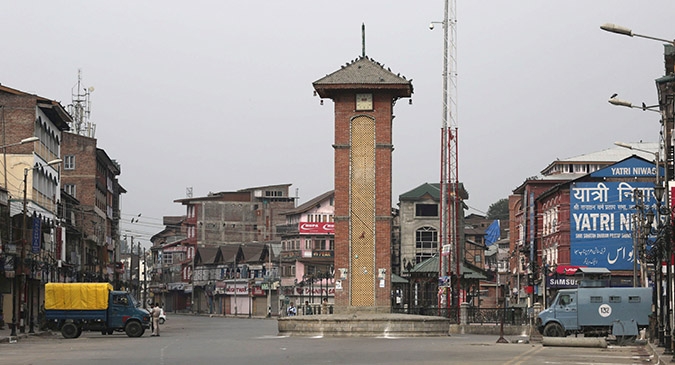Introduction of Jammu Kashmir
| 12-Sep-2018 |
Introduction of J & K
Jammu and Kashmir is a very important state of India both geographically and culturally. The state has different parts with religiously, culturally and linguistically varied population. One of the parts of this state is Jammu. Generally, Jammu is referred to as a city, but in reality, it is a region with 10 districts.
Geography-
Jammu shares one international border and two areas share the LOC (Line of Control) ie Kathua shares the international border with Pakistan and Rajori and Poonchh share the LOC with Pakistan.
Geographically, Jammu also has a Chicken Neck, like Assam, at Akhnoor district.
Rivers-
Jammu has two major rivers, namely Chenab and Ravi.
The origin of Chenab is from Himachal Pradesh. Two tributaries of Indus river, Chandra and Bhaga, from the Lahaul and Spiti form the Chenab, it enters Jammu from the Kishtwar district.
Ravi river also originates in Himachal Pradesh and then runs through Jammu. Besides these there are several tributaries and springs in the region.

People and Culture-
Jammu has a very diverse culture. The inhabitants of Jammu consist of Dogras, Gujaras and Pahadis, each speaking dialects different from the other. Dogras speak Dogri, Gujars speak Gojri and the Pahadis speak Pahadi. The language spoken in Kishtwar is Kishtwari, in Doda people speak Shirazi and in Bhaderwah people speak Bhaderwahi. It is interesting to note that the people speak same dialects despite having different religion and different cultures.
The famous miniature paintings from Chamba and Dalhousie of Himachal Pradesh have their origin from Basholi in Jammu. It is ironical that the governments, over the years have completely neglected this art form. It is due to the efforts of some locals that the Basholi painting form is still alive.
Jammu is also called the city of Temples.
One of the most famous and revered temple is of Goddes Vaishno Devi in Katra. Per year about 1.5 crore devotees visit this temple from all over the world.
The Amarnath shrine in Pehalgam is another very famous and revered destination for devotees. Despite the difficult terrain and terrorist threats (should this be written???) lakhs of pilgrims throng the Amarnath shrine.
Some of the other famous temples and Gurudwaras in Jammu are- Mahakali temple in Bahu fort, Raghunath Temple, Karimchi in Udhampur, Nagli Sahib Guridwara, Bhail Devi temple in Bhadrawah, Sudh mahadev Temple in Patnitop, Vasukinag Temple in Bhadarwah, Shivkoti temple in Reasi.
The Bhadreshwar temple in Rajori is not only one of the most ancient temples it is also famous because it was attacked by Pakistan in 1947 and also in 1965 with bombs, but they could not cause much damage to the temple. Now this temple is maintained by army.
Thus Jammu is a very vibrant part of the state of Jammu and Kashmir, with its variety of cultures and ancient heritage sites. It is little explored region. It has many sites of heritage, historical, religious and cultural significance, which are yet to be explored.
Tags: